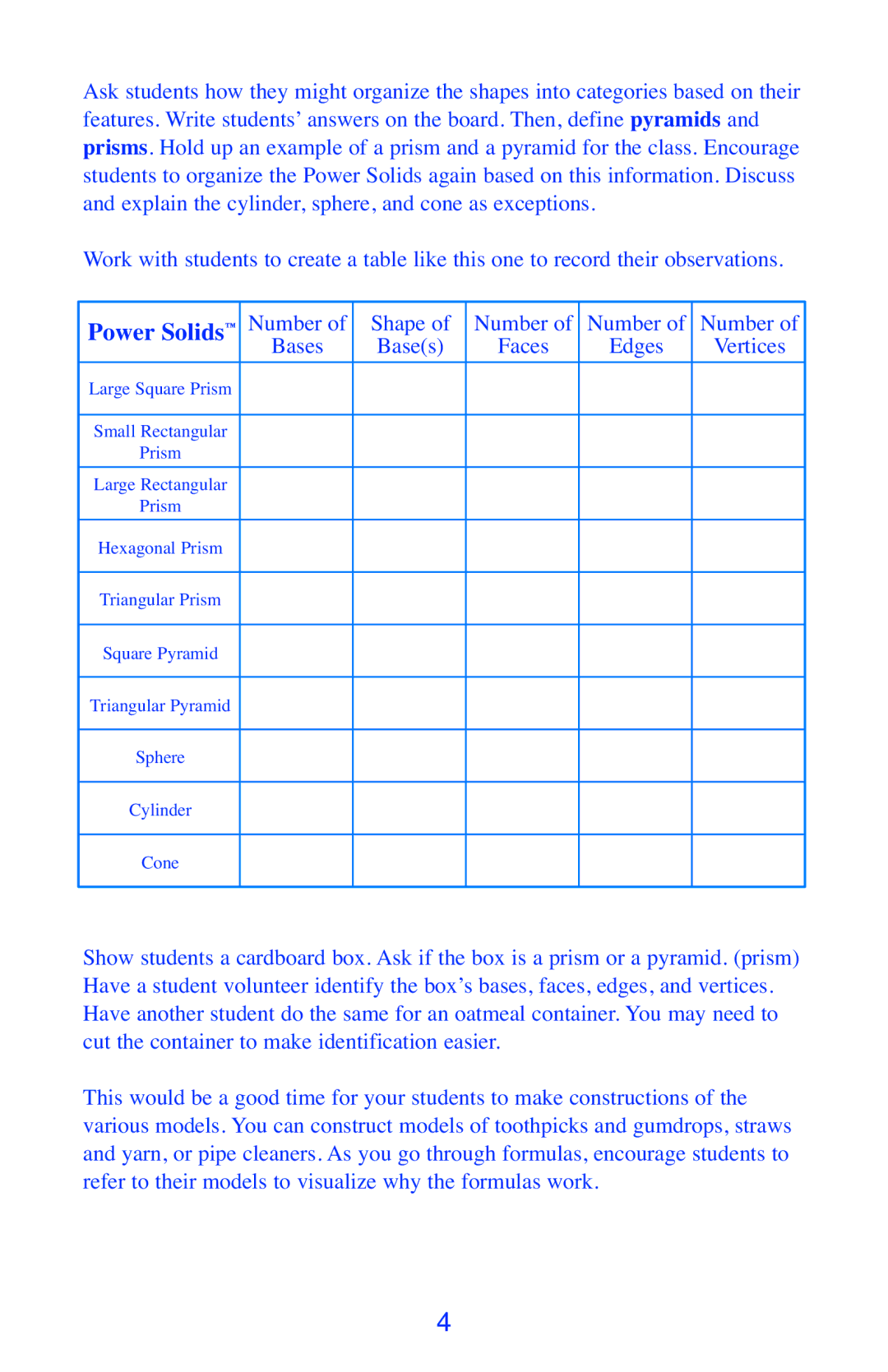
Ask students how they might organize the shapes into categories based on their features. Write students’ answers on the board. Then, define pyramids and prisms. Hold up an example of a prism and a pyramid for the class. Encourage students to organize the Power Solids again based on this information. Discuss and explain the cylinder, sphere, and cone as exceptions.
Work with students to create a table like this one to record their observations.
|
|
|
|
|
|
|
Power Solids | ™ | Number of | Shape of | Number of | Number of | Number of |
| Bases | Base(s) | Faces | Edges | Vertices |
Large Square Prism
Small Rectangular
Prism
Large Rectangular
Prism
Hexagonal Prism
Triangular Prism
Square Pyramid
Triangular Pyramid
Sphere
Cylinder
Cone
Show students a cardboard box. Ask if the box is a prism or a pyramid. (prism) Have a student volunteer identify the box’s bases, faces, edges, and vertices. Have another student do the same for an oatmeal container. You may need to cut the container to make identification easier.
This would be a good time for your students to make constructions of the various models. You can construct models of toothpicks and gumdrops, straws and yarn, or pipe cleaners. As you go through formulas, encourage students to refer to their models to visualize why the formulas work.
4
